Yves GARY Affichages : 2808
Catégorie : 1895 : DEFI N°9
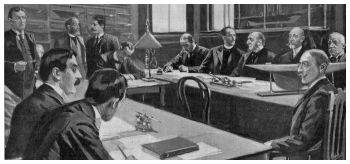 L'ENQUETE COMMENCE
L'ENQUETE COMMENCE 27 Dec. 1895 - L'enquête se tiendra dans la salle des modèles du New-York Yacht Club ce matin à 10 heures. (Pas de traduction)
27 Dec. 1895 - L'enquête se tiendra dans la salle des modèles du New-York Yacht Club ce matin à 10 heures. (Pas de traduction)
 The room has been arranged so that it has the appearance of a courtroom. At one end is a platform, on which are seats and tables for the committee. In front of this platform are some smaller tables, and these are for the use of the lawyers and the owners of the two yachts, Messrs. C. Oliver Iselin, W. K. Vanderbilt, E. D. Morgan, and Lord Dunraven. Other seats arranged on each side of the room are for the members of the Cup and Regatta Committees, the witnesses, and other who may be admitted by the investigating committee.
The room has been arranged so that it has the appearance of a courtroom. At one end is a platform, on which are seats and tables for the committee. In front of this platform are some smaller tables, and these are for the use of the lawyers and the owners of the two yachts, Messrs. C. Oliver Iselin, W. K. Vanderbilt, E. D. Morgan, and Lord Dunraven. Other seats arranged on each side of the room are for the members of the Cup and Regatta Committees, the witnesses, and other who may be admitted by the investigating committee.
J. Pierpont Morgan will preside. The other members of the committee are William C. Whitney, George L. Rives, E. J. Phelps, and Capt. A. T. Mahan, United States Navy.
Joseph H. Choate will look after Mr. Iselin's interests. He is one of the best admiralty lawyers in the country. Mr. Asquith, Lord Dunraven’s lawyer, is a famous admiralty lawyer in England, and it is expected that there will be some fun between these two legal lights during the investigation. Mr. Phelps, it is understood, will do whatever examining is done by the committee.
The chief witnesses for the Defender will be N. G. Herreshoff, Herbert C. Leeds, W. Butler Duncan, Jr. Newberry D. Thorns, W. K. Vanderbilt, E. D. Morgan, and, of course, C. Oliver Iselin. Capts. Hank, Haff, and Terry will also be on hand. Twelve of the Defender’s crew have been summoned. They are George Conant, second mate; Irving Barbour, quartermaster; John Staples, quartermaster; James Robbins, Elmer Ham en, George Stinson, Will Haskel, Charles Scott, Horace Davis, Thomas Horton, Will Pickering, and John Presser.
 |
 |
 |
 |
 |
 |
||||||
 |
 |
 |
 |
 |
 |
||||||
 |
 |
 |
 |
 |
|||||||
 |
|||||||||||
 |
|||||||||||

 Feb. 1st, 1896 - The committee appointed by the New-York Yacht Club by resolution adopted at a meeting held on the 18th of November, 1895, beg leave to report:
Feb. 1st, 1896 - The committee appointed by the New-York Yacht Club by resolution adopted at a meeting held on the 18th of November, 1895, beg leave to report:
The resolution was in these words:
At the meeting when these resolutions were adopted a letter from Mr. H. Mainland Kersey was read, which contained the following passage:
The committee, on Nov. 23, wrote to Mr. Kersey, requesting that, in accordance with the offer contained in his letter, he would communicate with Lord Dunraven and inform him that it was the desire of the New-York Yacht Club and the intention of the committee to begin immediately an investigation of the facts connected with the race of Sept. 7, and the charges made against the representatives of the yacht club. The committee added that they would be prepared to enter upon this investigation immediately upon the arrival of Lord Dunraven.
The committee were of the opinion that, as Lord Dunraven in the races in question had represented the Royal Yacht Squadron, it was due to that body to inform them of the appointment of the committee and of the proposed investigation, in order that the yacht squadron might take such part in the investigation, or make such suggestions in regard to its scope and character, as it thought fit.
The committee, therefore, on Nov. 23, 1895, addressed to Mr. Grant, the Secretary of the squadron, the following cable:
An answer was received by cable a few days later, which was confirmed by the following letter from Mr. Grant:
The committee, on being apprised of the determination of the Royal Yacht Squadron to take no part in the proposed investigation, concluded that a full judicial inquiry was essential, and they thereupon added to their number, by invitation, Capt. Alfred T. Mahan of the United States Navy, and Mr. Edward J. Phelps, who took part in the subsequent proceedings, the result of which is now reported.
The charges referred to were contained in a pamphlet published by the Earl of Dunraven and reprinted in The London Field of Nov. 9, 1895, and they were repeated by him in a speech at Cardiff on the 21st of the same month. They had reference to the races sailed at New-York on the 7th, 10th, and 12th of September, 1895, between the yacht Valkyrie III, belonging to the Earl of Dunraven and others, and the yacht Defender, owned by Messrs. C. Oliver Iselin, Edwin D. Morgan, and William K. Vanderbilt of New-York, in competition for what is known as the America's Cup, held by the New-York Yacht Club, and subject to challenge under certain conditions. Mr. Iselin was the managing owner.
Lord Dunraven's statement, as contained in the publication above referred to, so far as it related to the first race, was as follows:
Lord Dunraven’s pamphlet, besides the charge of secret alteration of the water-line length, contained various criticisms of the competence or good judgment of those who were charged with the management of the races on behalf of the New-York Yacht Club.
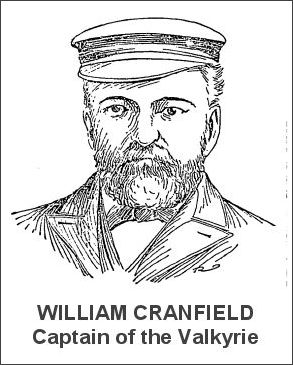 Question of Ballast Investigated.
Question of Ballast Investigated.The committee have confined their inquiries solely to the question of the truth of the charge of surreptitious changes in the ballasting of the Defender on Sept. 7, not deeming themselves authorized or called upon to investigate any other circumstances connected with this or the subsequent races between the same yachts, except so far as they might assist in determining that question.
The committee met at the clubhouse of the New-York Yacht Club, in New-York, on the 27th day of December, 1895, and sat from day to day, with the exception of Sunday, until noon of the 31st, for the purpose of hearing evidence upon the subject of their inquiry.
The Earl of Dunraven appeared before them, with his counsel, Mr. Askwith, and produced his own and various other evidence in support of the charge he had made. He declined to undertake to substantiate or prosecute the charge, but said that he felt bound to attend and make his statement, and to furnish to the committee in aid of their inquiry such evidence in support of the charge as he possessed.
Mr. Iselin, the managing owner of the yacht Defender, also appeared with his counsel, Mr. Choate, and testified before the committee, and introduced evidence to disprove the charge made by the Earl of Dunraven.
It was the purpose and the effort of the committee to avail themselves of all existing evidence on both sides of the case, so far as it was possible to obtain it. They believe that with some slight exceptions hereafter mentioned, and not in their judgment material, they have been furnished with and have heard and considered all the evidence that would tend to throw any light upon the issue.
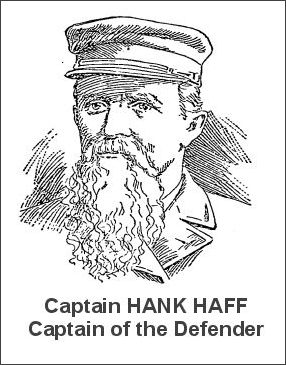 The Earl’s ‘Oral Evidence.
The Earl’s ‘Oral Evidence.Lord Dunraven‘s statement before the committee contained in a statutory declaration given by him in London and also in his oral evidence.
The substance of it was that on the 31st of August, 1895, from on board the Valkyrie, he observed the Defender very closely as she lay nearby in the Erie Basin, and noticed her trim, her line of immersion, and general appearance. That on the 6th of September, when the Defender was again in the Erie Basin for the purposes of the official measurement above referred to, he again saw her from the Valkyrie, and noticed that she was floating much higher than on the 31st of August.
That he specially noticed on the port side of the Defender an outlet hole about amidships, which was just cut by the water a little above the base, and which (he thought) was rather more than one inch in diameter; that he also noticed the line of bronze plating on the side of the Defender, and the bobstay bolt, and its height above the water.
That both yachts lay inside Sandy Hook on the night of that day, and that he slept on board the steamboat City of Bridgeport, a short distance from the Valkyrie, and about 200 yards from the Defender; that about half-past six in the morning of the next day, (Sept. 7,) being the day of the race, he was awakened by Mr. Glennie, and requested to come up and look at the Defender; that he looked at her through, a pair of glasses, and was convinced that she lay deeper in the water than when measured. That he rowed up to the Defender in his gig that morning to put his representative on board of her for the race, and had a further opportunity to observe the vessel in the particulars above stated—coming up on the starboard side under the stern, then along the port side, and round the bow; and he then inspected her with care to see whether the pipe hole and the other marks which he had observed on the previous day were in the same position as when she was measured; that the hole was nowhere visible above the water, and that in his judgment and belief the line of bronze plating and the bobstay bolt were nearer to the water than when she was measured.
That, judging from the fact that the pipe hole was immersed, and from the apparent distance of the bronze plating and bobstay bolt from the water, he came to the conclusion, which he still believed to be true, that the vessel was immersed three or four inches deeper in the water than when she was measured the day before.
That he also looked carefully at the general trim of the Defender, and she was lying true on the water, and had no list to port or starboard.
That in forming his conclusion he also took into account the general appearance of the Defender and her trim, in addition to the other matters before mentioned.
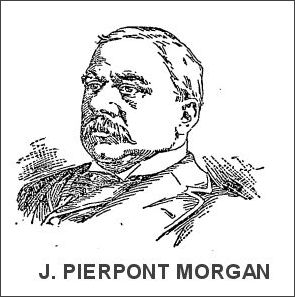 Not Sailing on Measured Length.
Not Sailing on Measured Length.That afterward, and when the Valkyrie was towing out to start in the race, Mr. Latham Fish, a member of the Cup Committee, came on board as the representative of the Defender; that Lord Dunraven then stated to Mr. Fish that he was sure the Defender was not sailing on her measured length, but was more deeply immersed and was sailing at least a foot beyond her proper length of load water line, and gave Mr. Fish his reasons for that conclusion. That he said to Mr. Fish that he wished the committee to put one of its members or some reliable representative on board both of the yachts immediately after the race, and desired that the yachts should be re-measured the same evening, if possible; but, if impossible, then that the representative of the Cup Committee should remain on board the yachts until remeasurement took place. And that the load water line on both yachts should before the next race be designated by plain external marks.
That Mr. Fish promised to lay the complaint and request before the committee, and that immediately after the race Mr. Fish was put on-board the committee boat for the purpose of so doing.
Lord Dunraven also stated that the Hattie Palmer lay alongside of the Defender the night before the race, and that work was going on till 1 o'clock in the morning on board the Defender.
It appeared, and was not questioned, that the Defender crossed the line on the completion of the match at 5:29:30 o'clock in the afternoon; that both yachts went up to Bay Ridge to pass the night; that from the place where Mr. Fish was put on board to the Erie Basin was about twenty-five miles, and that it would have been impossible to reach the Basin, which was the only place where a measurement could be had, until long after dark. And Mr. Fish so stated to Lord Dunraven when his request above mentioned was made.
On the following morning, (Sunday at about 10 o'clock, the Defender was taken into the Erie Basin and remeasured, upon notice to both parties and in presence of their representatives, and the measurement of the load water line was found to be substantially the same as at the previous measurement on the 6th, the variation being too trifling to be material. The accuracy of neither measurement was questioned.
And on the same occasion the load water line so measured was plainly marked by a paint mark on the stem, and a red disk on each side.
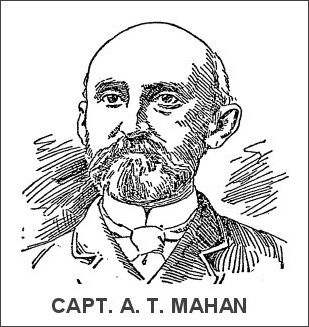 Judged by the Eye Only.
Judged by the Eye Only.Upon cross-examination Lord Dunraven admitted in substance that he judged by the eye solely, and that the Defender might not have been sunk more than two inches; that he could not be tied down to a definite statement in this respect; that the discharge hole mentioned was the only mark by which he was enabled to verify the accuracy of his observation; that in observing the vessel on the morning of the 7th, through the glass, he saw only her starboard side, the pipe hole being on the port side; that there was then a ripple on the water of three or four inches; that at the distance of 200 yards he could not accurately estimate a difference in immersion; that the only other opportunity he had of observation that morning was when he rowed out to the Defender to put his representative on board, and passed round the port side; that he thought the bobstay bolt was about twelve or fourteen inches above the water on the 6th, and some eight or ten inches on the 7th, judging from observation alone; that he thought the load water line was lengthened by the increased immersion about one foot, though he did not judge from that, but only from the apparent depth of the vessel in the water as compared with his recollection of her in the basin the day before.
The testimony or Mr. Glennie, who appeared before the committee in person, and of Mr. Ratsey, whose ex-parte statutory declaration was read, was also produced on the part of Lord Dunraven. These witnesses spent the night of Sept. 6 on board the City of Bridgeport, with Lord Dunraven, and at about 6 o'clock in the morning of the 7th they rowed around the Defender in a small boat. Their evidence was to the same general effect as that of Lord Dunraven on the point of the apparent increase in the immersion of the Defender.
Mr. Glennie placed the apparent immersion at about one and a half inches more on the 7th than on the 6th.
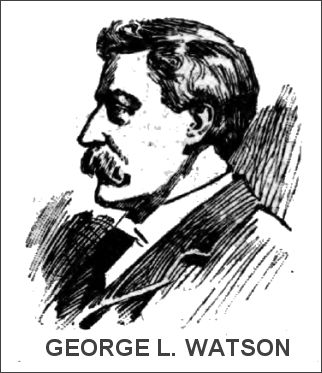 Mr. Watson’s Observation.
Mr. Watson’s Observation.Testimony to the same effect was also introduced in the shape of an ex-parte statutory declaration of Mr. Watson, the designer of the Valkyrie, who testified that on the morning of the first official measurement, at the Erie Basin, he plainly saw above water the pipe hole mentioned by Lord Dunraven, but did not see the Defender on the morning of the race, and that on the day of the remeasurement he again saw the pipe hole above water.
Similar ex-parte declarations from Capts. Cranfield and Sycamore of the Valkyrie were also read. They confirmed from general observation the statement of Lord Dunraven as to the apparent increased immersion of the Defender, but neither of these witnesses saw the Defender except from the deck of the Valkyrie, at a distance of about 300 yards.
Three other witnesses were mentioned by Lord Dunraven to the committee as persons whom he thought would give evidence to the same effect as above stated—Mr. Kersey, a resident of New-York, who had been the representative of Lord Dunraven in the United States in matters connected with this match; the Captain of the steamer City of Bridgeport, which was used at the races as a tender to the Valkyrie; and the pilot of the Valkyrie. These witnesses were not produced. It was not claimed that their evidence would be other than cumulative to that given by the other witnesses on the part of Lord Dunraven, and of the same character.
Nevertheless, the committee, on their own account, not being authorized to issue compulsory process for the attendance of witnesses, invited the attendance of Mr. Kersey, which he declined to give, stating as his reason the objection of those for whom he acted in his business. And they made such efforts as they could to obtain the other two witnesses, but without success. Mr. Young, the pilot, was at sea. Capt. Parker of the City of Bridgeport, though quite willing to appear, was so engaged as to be unable to attend.
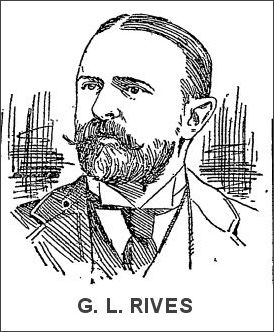 Opinions Not Based on Measurements.
Opinions Not Based on Measurements.It will be perceived, therefore, that, considering this case, in the first place, upon the evidence introduced on the part of Lord Dunraven alone, the only proof in support of the charge it involves consists in the opinions of the witnesses above referred to, formed merely by looking at the vessel in the water on two successive days; that on the latter day she was from an inch and a half to four inches lower in the water than on the former. And that these opinions were based solely upon the general appearance of the vessel as apparent to the eye, and upon no measurement or other data whatever by which they could be verified, excepting only that a pipe hole of about an inch in diameter, which on the first day was just at the water's edge, was the next day not to be seen. The committee attach no importance to the opinions of the witnesses who only saw the Defender from a distance of two or three hundred yards. There remain, therefore, but three persons - Mr. Glennie, Mr. Ratsey, and Lord Dunraven himself—who ever got near enough to the Defender to see the pipe hole, even if it had been visible.
It is obvious that a very slight list of the vessel to starboard might have made this pipe hole visible on the first day, and that a similar list to port might have made it invisible on the second, quite irrespective of its actual position in. reference to the load water line. A difference of three or four inches in the distance of the bobstay bolt from the water might, if it existed, have easily occurred from a change in the trim of the vessel in consequence of the presence of the crew and their belongings in the forecastle, or other temporary cause bringing her a little down by the head. Lord Dunraven himself says in his publication above quoted that the difference in the height of the bobstay bolt above the water might have resulted from an alteration in trim.
The Erie Basin, where the Defender was observed on the first day, is a small, entirely closed space, where the water is practically smooth. On the second day the Defender lay inside of Sandy Hook in the lower bay of New-York, a large body of water, open to the ocean for five or six miles on its easterly side. Its surface is necessarily at all times in motion, and during the night between the two days thewind had been blowing heavily. It is obvious that the difference in the condition of the water in which the Defender lay upon the two days might well have produced a difference of apparent immersion.
 A Grave Fraud Charged.
A Grave Fraud Charged.The fraud that is involved in the charge thus made, if it is found to be true, is a very grave one, utterly destructive to the reputation of all who should appear to have been concerned in it, and especially odious under the circumstances of a friendly contest between citizens of different countries exciting international interest, and supposed to be conducted by gentlemen, upon a high plane of honor and mutual confidence.
From the magnitude and difficulty of the operation necessary to its consummation it must unavoidably, if it occurred, have been participated in not only by Mr. Iselin and those concerned with him in the management of the Defender, but by all the officers and crew of that vessel, and many others incidentally employed.
It appeared from the evidence of Mr. Herreshoff, the designer of the Defender, confirmed by other witnesses, that to have produced an increased immersion of one inch on the Defender would have required 7,135 pounds of additional weight, or about three and a quarter long tons; that to have produced such an immersion of three inches would have required about nine and three-quarter tons; and an immersion of four inches about thirteen tons; and that an immersion of one inch would have lengthened the load water line eight inches, and in the same proportion for each additional inch of immersion.
If such a result was produced, therefore, all the weight thus shown to be required must have been removed from the vessel before the first measurement on the 6th, replaced during the night of the 7th in time for the remeasurement on the 8th. And this was Lord Dunraven’s theory as finally stated upon cross-examination.
Such a fraud should not even be charged without due regard, first, to the established character of those upon whom the imputation of guilt must fall; and second, to the kind and degree of the evidence on which it rests. To justify even accusation, suspicion must at least be reasonable; yet upon the hearing before the committee the evidence above summarized, (and hereafter appended in full,) so slight, so extremely liable to mistake, is all that is offered in justification of the charge publicly made in The London Field. It is not readily to be believed that any expert, however skillful, could determine by the eye, between one day and another, and under circumstances so diverse, a difference so trifling in the displacement of a vessel, especially one with which his previous acquaintance was small.
Lord Dunraven himself had the candor to say that he did not claim that this evidence, even irrespective of anything that was shown to the contrary, established the truth of his charge; he did claim, however, that the omission of the Cup Committee either to remeasure the Defender on the evening of the race or to put a representative on board to remain during the night, so far prevented the proof or disproof of his claim as to justify him in renewing it after the matter had been revived by the Cup Committee's report of Oct. 24, and that point will, therefore, be specially considered hereafter.
 The Satisfactory Defense.
The Satisfactory Defense.But the case was not left to stand upon the evidence thus far reviewed. On the part of Mr. Iselin there was introduced the testimony of a large number of witnesses, including, besides his own, that of the designer of the Defender, the official measurer, the Captain, all the officers, and all the crew of the Defender, numbering thirty in all, (excepting five seamen, who were shown to be at sea, and, therefore, inaccessible,) all the gentlemen who were on board the Defender at the time of the race, and all other persons, so far as the committee could learn, who had such means of observation as enabled them to know any facts material to the issue. These witnesses were personally present, except thirteen seamen, whose testimony was taken by ex parte affidavits.
By this evidence there was established to the entire satisfaction of the committee the facts now to be stated.
The Defender, by her original design, was built and intended to sail without any loose ballast whatever, all weight thought necessary being introduced into the keel by a single casting, to the amount of about eighty-five tons. This calculation was based upon the rule of the New-York Yacht Club requiring yachts to sail in such races with their tanks, fittings, bulkheads, &c., on board, as when prepared for ordinary use.
During all the sailing of the Defender after her completion down to the time of this race, including various trial races with the Vigilant, to determine which of those yachts should be entered in the competition for the cup, the Defender had sailed without any loose ballast whatever, but with her tanks, frittings, &c., on board. She was measured officially for the trial races on the 31st of August. 1895, and her load waterline was then found to be 88 85-100 feet. She sailed with this line in all races prior to the cup race now in question, when her load water line was found by the official measurement of Sept. 6 to be 88 45-100 feet, a difference of but four inches and eight-tenths of an inch in length, corresponding to three-fifths of one inch of immersion. She is a boat of unusual stability and power, and all the evidence, both scientific and practical, was to the effect that additional ballast beyond what she originally contained was not required, and would certainly have diminished rather than improved the speed of the boat. Such was the opinion at the time of the race of Mr. Herreshoff, the designer; Capt. Haff, her sailing master, and Mr. Iselin.
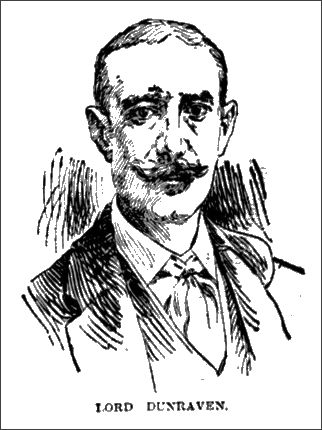 No Motive for Increasing Ballast.
No Motive for Increasing Ballast.It is plain, therefore, that no motive existed for increasing the ballast of the Defender. It cannot be supposed that there could have been an intention to place the vessel upon a different trim from that previously determined by her designer and manager to be the best.
After the arrival of the Valkyrie in the United States it was found that she was stripped of her fittings, water tanks, bulkheads, &c., and not in a condition to comply with the rule of the New-York Yacht Club above mentioned. A clause was accordingly introduced in the detailed agreement for the cup races, executed on Sept. 4, waiving that rule.
On the 4th and 5th of September the Defender, while at New-Rochelle, was stripped and had all her fittings, water tanks, on the 7th, or taken out of her after the race on the 7th, and before the remeasurement on the 8th.
There were no tanks left in the boat into which water could have been introduced as ballast, and the hold was examined and found to be dry, immediately before and during the race. Lord Dunraven admitted that water could not have been used as ballast without tanks to contain it. After the Defender’s bulkheads were removed at New-Rochelle, she was open from stem to stern, so that no ballast could have been concealed. Mr. lselin personally examined the hold before the measurement on Sept. 6. Immediately before the race on Sept. 7 both Mr. Iselin and Mr. Herreshoff examined the hold again to see how the twenty-one pigs had been stowed the night before, and the condition of the hold as to water.
No ballast of any kind, to any material amount, could possibly have been put on board or taken off the Defender, as the committee believe, without the knowledge of all the officers and crew, and of Mr. Iselin and his guests.
The work referred to by Lord Dunraven as done on board the Defender the night before the race was the moving and cutting and replacing of the lead before mentioned, and likewise work done by a party of riggers in fitting new wire ropes forming bridles for the mainsheet blocks - several riggers from New-York, as well as the officers and crew of the Defender, testifying before the committee that they were engaged on such work that night, and that it lasted until 3 o'clock in the morning, and was of a nature to make considerable noise. The Hattie Palmer, after lying a short time alongside, left the Defender for the night before 10 o'clock, both on that evening and the next, and did not return to the Defender on either night.
In respect to the pipe hole on the port side of the Defender, noticed by Lord Dunraven at the time of the measurement the day before the race, and which proved to be the discharge of the bilge pump, it was shown by a careful measurement and survey made by Mr. De Luze, a civil engineer experienced in such work, assisted by Mr. Hyslop, the official measurer, and testified to by them, that when the vessel lay in still water, trimmed and ballasted, as she was on Sept. 8, the discharge hole would not be visible, being entirely below the load water line as defined by the external marks affixed on that day, as above stated, and this was shown upon a drawing prepared by Mr. De Luze.
This hole was not, as thought by Lord Dunraven and his witnesses, about an inch in diameter, but was two and one-eighth inches in diameter.
It is not disputed that the Defender was in substantially the same trim and the same degree of immersion on both the 6th and 8th of September. And Mr. Hyslop testified positively that the marks which had been painted on the Defender in his presence by Mr. Watson were still visible at the time of the hearing before the committee, identically as they had been put on.
The committee had no reason to doubt the accuracy of these measurements or the correctness of the evidence in respect to them. But they deemed it most important that it should be settled beyond any possible question whether the discharge hole of the bilge pump was or was not visible above the load water line, if the vessel was upon an even keel. At the request of the committee, therefore, Capt. Mahan kindly undertook to make a further examination of the Defender, now lying at New-Rochelle, with reference to this point. He made a visit to the yacht in company with Mr. Iselin and Mr. Askwith, but found that under the uncertain weather conditions prevalent at this season a measurement direct from the water surface was scarcely practicable, and recommended that the matter in question should be settled by measurements starting from points of origin within the yacht herself. He therefore obtained from the Brooklyn Navy Yard, through the kindness of Naval Constructor Bowles, the services of Mr. Hibbs, an Assistant Naval Constructor in the United States Navy, who, without being apprised of the result reached by Mr. De Luze and Mr. Hyslop, or seeing the drawings, went to New-Rochelle and made a careful measurement of the location of the bilge pump discharge in reference to the load water line as marked on the Defender externally by Mr. Watson.
The request made to Constructor Bowles for the committee was as follows:
Mr. Hibbs reported in writing to Constructor Bowles, by whom the report was transmitted to the committee through Capt. Mahan, that the lower edge of the discharge hole was 213-32 inches below the load water line, thus confirming the accuracy of the previous measurements by Mr. De Luze and Mr. Hyslop. Mr. Hibbs followed a different method of measurement from that adopted by the others; for he ascertained the position of the bilge pump hole entirely by measurements starting from within the Yacht herself and not from the water. It follows, therefore, as a mathematical certainty, that upon an even keel, in the Erie Basin, this discharge hole would have been below the level of the water.
By further experiments made at the same time, Mr. Hibbs also ascertained that:
Mr. Hibbs further stated that he carefully examined the paint marks on the stem and side of the Defender, and that it was evident that they were of some standing.
The proof showed, that as the vessel lay in the Erie Basin just before the official measurement on the 6th of September, she had a slight list to starboard, probably occasioned by the movement of the crew to that side of the vessel before they were put in position amidships for that measurement. And it was further shown that the quarters of the crew were in the forecastle; that their cots, bedding, &c., there, were of the weight of about forty pounds to each man; that those cots, &c-, were taken out before the race and transferred to the Hattie Palmer, and returned to the Defender after the race; and that their presence on board at the time she was seen by Lord Dunraven and his witnesses early on the morning of the 7th, or the congregating of the crew forward for any reason, might have brought the vessel a little down by the head, as shown by the experiments of Constructor Hibbs, and so have brought the bobstay bolt nearer the water.
On the occasion of Lord Dunraven’s coming alongside the Defender in his gig, there was a general and perfectly natural movement of nearly everyone on board, to that side of the yacht.
Would Have Violated Rules.
If, as Lord Dunraven suspected, the Defender had entered upon the race of Sept. 7 with her racing line increased by the addition of ballast after the measurement of Sept. 6, she would have been violating the rules of the New-York Yacht Club, under which the race was sailed, one of which is as follows:
This rule is specifically reproduced in the special agreement of Sept. 4 governing the cup races.
Lord Dunraven did not make any written or other communication to the Cup Committee or to Mr. Iselin on the subject of the increased immersion of the Defender, except that made to the committee through Mr. Fish.
The rule of the New-York Yacht Club on the subject of protests for violation of the rules of a race is as follows:
Lord Dunraven did not raise his flag, as required by this rule, nor make any protest at all against the Defender on that race.
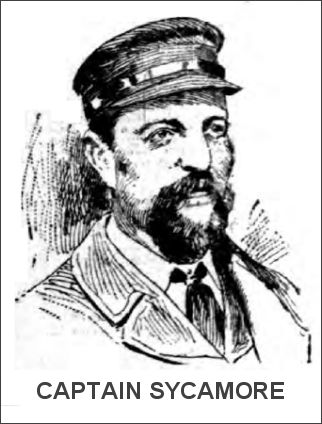 Suspicion Not Justified.
Suspicion Not Justified.With reference to the suggestion of Lord Dunraven that the omission of the Cup Committee to remeasure the Defender on the same day of the race, or to put a representative on board of her to remain during the night, justified his suspicion that her displacement had been tampered with between the race and the remeasurement on the following day, a few words should be said.
It has already been pointed out that a remeasurement of the Defender after the race and on the same day was impossible, because the Erie Basin, where alone it could take place, was too far distant to be reached until too dark to make it; and that Lord Dunraven was so informed by Mr. Fish when the request was made. It was fully proved that such a measurement could not be made by artificial light. The remeasurement that took place on the next day (Sunday) at 10 o'clock in the morning, was therefore the earliest possible.
In regard to the request, which Lord Dunraven states that he made to Mr. Fish for transmission to the Cup Committee, namely, that each of the two yachts should be taken into the charge of the committee for that night, it is conclusively shown that no such request reached the committee.
Mr. Fish denies that any such request was included in the message with which he was charged. That he did not understand that it was included is shown by the fact that in delivering the message a few hours afterward, gravely impressed as he says with its importance, he made no mention to the committee of such a request.
It further appears that a memorandum of the message sent was made by Mr. Fish in writing which was produced and put in evidence, and contains no allusion to the request in question. Mr. Fish testifies that he made this memorandum in Lord Dunraven’s presence, because unwilling to trust his own memory, and in order to be sure that it should be accurately conveyed; that he read it over to Lord Dunraven, who suggested a correction, which was interlined; and that this memorandum contained the whole message as given to him, and as delivered by him. Lord Dunraven remembers that some memorandum was made by Mr. Fish at the time, concerning this message, but does not recollect that he himself suggested any correction. But even upon his own recollection of the facts, the written memorandum seems strongly to confirm Mr. Fish’s statement.
It is testified by the Cup Committee that the memorandum was delivered to them by Mr. Fish as the message he had received, and it is clear that it was acted upon by them as such, and that the publication by Lord Dunraven in The Field was the first knowledge that the committee had of any alleged request that they should take charge of the vessels pending remeasurement. It is also to be observed that Lord Dunraven in his letter to Mr. Kersey of Sept. 27 makes no mention of such request; for all he there says is: “I don't know whether Fish ever told the committee I wished the ships measured immediately after the race."
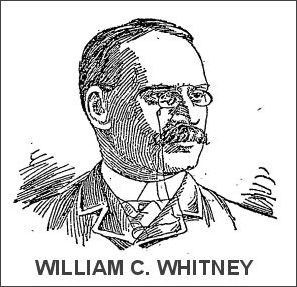 The Message About Immersion.
The Message About Immersion.It was shown that the message from Lord Dun-raven as to the increased immersion of the Defender, and the reason for his request for a remeasurement of the Defender, were not communicated to Mr. Iselin by Mr. Fish or by the Cup Committee, and did not come to his knowledge till long afterward.
It has not been suggested that the members of the Cup Committee, or any of them, were or could have been parties to any tampering with the water line of the Defender. The complaint of Lord Dunraven made through Mr. Fish, was not stated in such terms as to suggest to them, in the absence of any definite request, that they ought to put a representative on board the Defender that night.
This is apparent from Lord Dunraven’s own statement of it in his publication in The Field. The committee has not been referred to any precedent for such action, nor to any rule of any yacht club in which such a remedy has been provided for. It necessarily implied distrust of all persons connected with the management of the Defender, and from their knowledge of these gentlemen it would doubtless never have occurred to the Cup Committee unless specially demanded.
But whether the Cup Committee should of their own motion, upon the suggestion that was in fact conveyed to them by oral message from Lord Dunraven, have taken that step as a matter of precaution, becomes now in the present case totally immaterial to consider, because, as has been shown, the evidence is conclusive that nothing did take place, or under, the circumstances could possibly have taken place on board the Defender that night, tending to support the charge made by Lord Dunraven. A representative of the Cup Committee, if he had been on board, could therefore have discovered nothing, and prevented nothing.
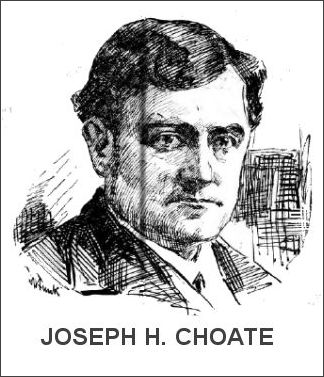 An Omission by Cup Committee.
An Omission by Cup Committee.The only other circumstance that the committee deem it material to allude to is the omission by the Cup Committee, until after the first race, to cause the load water length of the competing yachts to be marked externally on the vessels.
This was indicated on both yachts by the measurer at the time of the official measurement, by means of copper tacks placed in the decks. That these marks were accurate is not questioned. This method of marking the water line length was in accordance with the uniform practice of the New-York Yacht Club.
At the last race for the America's Cup, which took place in 1893 and in which a yacht belonging to Lord Dunraven took part, load water length was so marked, and without objection by him.
On the present occasion, the first request made by Lord Dunraven for an external marking was contained in a note dated Sept. 6, 1895, the very day upon which the boats were to be measured, addressed to Mr. Canfield, the Secretary of the Cup Committee. That committee without delay convened a meeting and acted favorably upon the request, provided Mr. Iselin consented: his consent being necessary to any modification of the terms of the agreement. He at once assented, and within a few hours after the receipt of Lord Dunraven’s request the committee had sent a sub-committee to the Erie Basin where the boats were to be measured, to see that they were marked externally as requested by Lord Dunraven.
But the Valkyrie had already been measured, and had left the Basin, and could not return on account of the tide. It was therefore arranged that the marking shoult take place on the 8th of September, the day following the first race. And the measurer was ordered to preserve the batten used in the first measurement, and to take steps to make sure that the yachts should be at -the same point of immersion.
It is apparent, therefore, that the reason why the external marking was not made until after the first race had been sailed was because Lord Dunraven was so late in his request for a method of marking not customary and not provided for in the agreement for the race, that it was impossible that it should be bad any sooner.
Lord Dunraven must be in error in his recollection that in his conversation with Mr. Fish he demanded, and as a result, secured, the external marking of the boats. And the suggestion that Lord Dunraven had repeatedly asked to have the vessels marked externally before the first race is not sustained by any evidence.
It is very much to be regretted that, if Lord Dunraven’s suspicions were not dispelled at the time of the remeasurement of the Defender on the 8th of September, he did not say so then, instead of accepting in silence the result which verified the previous measurement. The remeasurement was the committee’s response to the communication which they had received through Mr. Fish. In connection with them knowledge of the circumstances, which made it impossible that the imputed fraud could have been perpetrated without Mr. Iselin's concurrence, and their knowledge of Mr. Iselin, it satisfied them; and, as we have seen, it justly satisfied them.
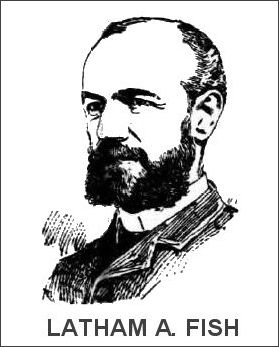 Made No Request for Further Action.
Made No Request for Further Action.To all appearance it satisfied Lord Dunraven. He was present at the remeasurement, and met there the members of the committee and Mr. Iselin. He made no request for further action. He made no objection to proceeding without further action. He made no inquiry as to how or how fully his oral message through Mr. Fish had been delivered, and no suggestion that any request which he supposed to have been contained in that message had not been complied with.
He sailed the next race in the series that had been agreed on without protest or objection on account of the change which he had told Mr. Fish he believed to have been made in the load water line of the Defender before the first race. And he testified that his belief that such a change had occurred did not influence him in his final withdrawal from the match at that third race. The Cup Committee seem to have been warranted in supposing that Lord Dunraven's suspicions were allayed, and that no further steps were necessary to settle any question of fact or to vindicate any one s reputation.
Upon a careful consideration of the whole case, the committee are unanimously of the opinion that the charge made by Lord Dunraven, and which has been the subject of this investigation, had its origin in mistake: that it is not only not sustained by evidence, but is completely disproved; and that all the circumstances indicated by him as giving rise to his suspicion, are entirely and satisfactorily explained. They deem it, therefore, but just to Mr. Iselin and the gentlemen concerned with him, as well as to the officers and crew of the Defender, that the committee should express emphatically their conviction that nothing whatever occurred in connection with the race in question that casts the least suspicion upon the integrity or propriety of their conduct.
And the committee are not willing to doubt that, if Lord Dunraven had remained present throughout the investigation, so as to have heard all the evidence that was introduced, he would of his own motion have withdrawn a charge that was so plainly founded upon mistake, and that has been so unfortunate in the publicity it has attained, and the feeling to which it has given rise.
The committee append a full stenographic report, revised by the counsel on both sides, of all the evidence laid before them, and of all the proceedings on the hearing, and likewise copies of all the documents and papers introduced on either side, as considered by the committee.
And they ask to be discharged from further consideration of the subject referred to them.
The committee cannot take leave of the case without expressing their regret that a part of the evidence now annexed should have been surreptitiously obtained by a New-York newspaper owned by one of the oldest members of the club, and published with comments very adverse to one of the parties, on the morning of the 20th of January. They had deemed it important, under the peculiarly delicate circumstances of this case, and the interest it had excited both in England and the United States, that no part of their proceedings should be laid before the public, or become the subject of discussion, until the whole evidence and their conclusions upon it could be made known in both countries.
Their request to this effect was so obvious in its propriety that it was most honorably observed by all the many persons who had access in a greater or less degree, to the proceedings of the committee. It was therefore in spite of the committee’s efforts, in opposition to their well understood wishes, and in disregard of the best interests of the Yacht Club, that this premature and imperfect publication was made.
E.J. PHELPS,
J. PIERPONTMORGAN,
W. C. WHITNEY,
A. T. MAHAN,
G. L. RIVES.
JAN. 21, 1895.
